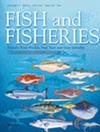鲨鱼保护从数据不足到大数据
IF 6.1
1区 农林科学
Q1 FISHERIES
引用次数: 0
摘要
公民科学越来越多地在世界范围内被用来收集数据,否则需要投入令人望而却步的资金和时间。与此同时,数字通信革命为众包、大数据方法和社交网络挖掘提供了机会,可以快速、经济有效地填补保护濒危种群所需知识的重大空白。鲨鱼是海洋中最濒危和数据最贫乏的脊椎动物之一。由于过度捕捞,世界范围内许多鲨鱼的数量正在下降,而大多数物种缺乏基本的丰度、分布和生活史数据。因此,迫切需要填补不同分类群、生态系统和区域之间的知识空白,以提高我们对其生态的认识,制定有效的保护行动,扭转其损失。在这里,我们介绍了一种新的公民科学和众包保护方法,通过sharkPulse,一个自动化数据摄取和组织的新平台,建立迄今为止最大的鲨鱼发生记录数据库。sharkPulse旨在补充和扩展严重依赖用户提交的类似生物多样性监测工具,旨在获取大量在线鲨鱼图像流并将其转换为发生记录,填补鲨鱼生态学和生物学的知识空白。该平台提供了一个蓝图,利用人工智能和大数据方法、社交网络数据挖掘和参与式科学,有效和持续地获取视觉媒体材料,并改变对数据有限的海洋和陆地动物种群的监测。本文章由计算机程序翻译,如有差异,请以英文原文为准。
From Data Deficient to Big Data in Shark Conservation
Citizen science is increasingly harnessed worldwide to gather data otherwise requiring a prohibitive investment of funding and time. Meanwhile, the revolution in digital communication offers opportunities from crowdsourcing, big data approaches and social network mining to quickly and cost‐effectively fill major gaps in knowledge necessary to protect endangered populations. Sharks are among the most endangered and data‐poor vertebrates in the ocean. Mainly due to overfishing, many shark populations are declining worldwide, while most species lack basic abundance, distribution and life‐history data. Hence, filling knowledge gaps across taxa, ecosystems, and regions is urgently needed to increase our understanding of their ecology, develop effective conservation actions and reverse their loss. Here, we introduce a novel citizen science and crowdsourcing approach for conservation through sharkPulse, a new platform automating data ingestion and organisation to build the largest database of shark occurrence records to date. Designed to complement and extend similar biodiversity monitoring tools relying heavily on user submissions, sharkPulse aims to source large streams of online shark images and transform them into occurrence records, filling knowledge gaps in shark ecology and biology. This platform offers a blueprint to leverage AI and big data approaches, social network data mining and participatory science to efficiently and continuously source visual media materials and transform the monitoring of data‐limited marine and terrestrial animal populations.
求助全文
通过发布文献求助,成功后即可免费获取论文全文。
去求助
来源期刊

Fish and Fisheries
农林科学-渔业
CiteScore
12.80
自引率
6.00%
发文量
83
期刊介绍:
Fish and Fisheries adopts a broad, interdisciplinary approach to the subject of fish biology and fisheries. It draws contributions in the form of major synoptic papers and syntheses or meta-analyses that lay out new approaches, re-examine existing findings, methods or theory, and discuss papers and commentaries from diverse areas. Focal areas include fish palaeontology, molecular biology and ecology, genetics, biochemistry, physiology, ecology, behaviour, evolutionary studies, conservation, assessment, population dynamics, mathematical modelling, ecosystem analysis and the social, economic and policy aspects of fisheries where they are grounded in a scientific approach. A paper in Fish and Fisheries must draw upon all key elements of the existing literature on a topic, normally have a broad geographic and/or taxonomic scope, and provide general points which make it compelling to a wide range of readers whatever their geographical location. So, in short, we aim to publish articles that make syntheses of old or synoptic, long-term or spatially widespread data, introduce or consolidate fresh concepts or theory, or, in the Ghoti section, briefly justify preliminary, new synoptic ideas. Please note that authors of submissions not meeting this mandate will be directed to the appropriate primary literature.
 求助内容:
求助内容: 应助结果提醒方式:
应助结果提醒方式:


